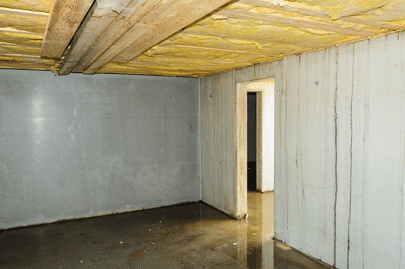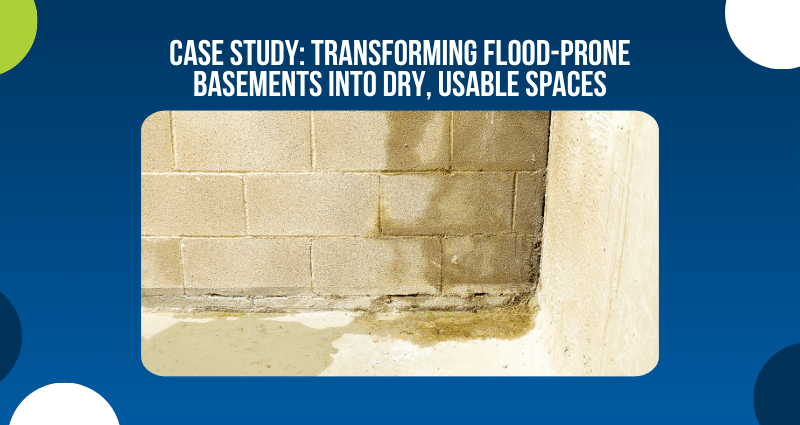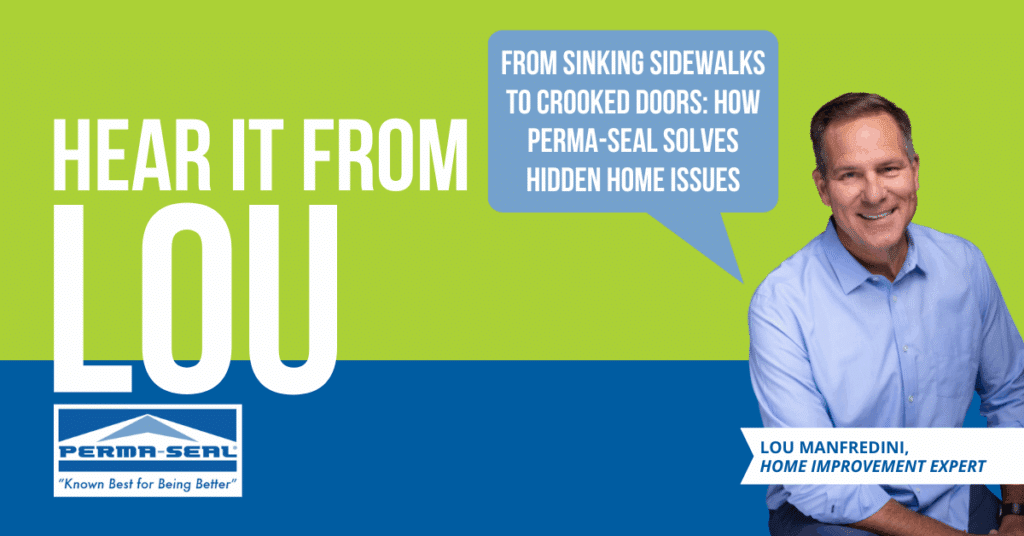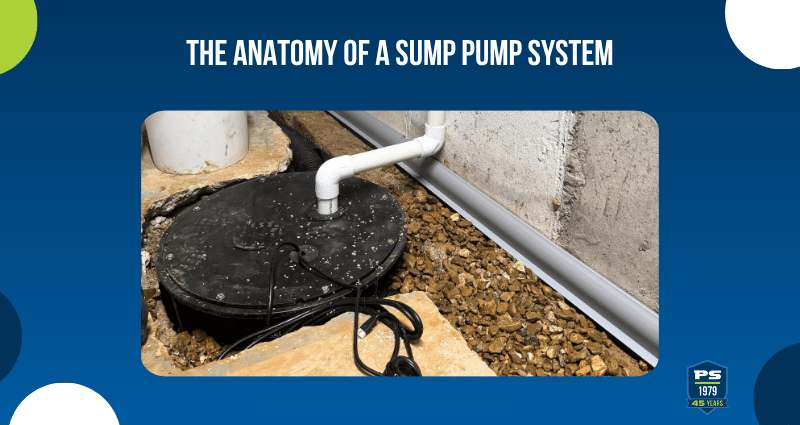Basement Waterproofing Experts in Chicago
Our team at Perma-Seal offers expert basement waterproofing and sump pump services for Chicago and NW Indiana home and business owners.
Get A Free Estimate
It is important to the health of your family that your basement is kept dry and the air quality at safe levels. Doing so can help preserve the structural integrity of your home and prevent additional problems.
Basement flooding is caused when water enters the basement environment. This can happen in a variety of ways; over the top of the foundation, through the cove joint (where the wall and floor meet), through leaking wall or floor cracks, through basement windows, through above grade issues like windows and siding, or plumbing issues.
Moisture can cause expensive damage, including rotting of support beams and floor joists. This decaying wood doesn’t just endanger the home’s structural integrity, but it can also be very attractive to unwanted pests, including termites and roaches. Furthermore, moisture in this area of the home can lead to growth of dangerous mold or mildew. This is a fungus that can grow on walls, floors, or ceilings, and it can make the home “like a basement”, which could lead to a variety of serious health problems. These issues can be avoided by making sure that an effective waterproofing system is installed to help keep it moisture-free.

Common Basement Water Problems & How We Fix Them
Leaking Wall Cracks
Problem: Cracks in poured concrete foundation walls are one of the most common entry points for water. These cracks often form due to natural curing, poor construction, or hydrostatic pressure. While they may start small, they can expand over time, leading to water seepage, mold growth, and structural concerns.
Solution: We offer permanent wall crack repair using an advanced sealing system that prevents leaks and stops cracks from worsening. Unlike temporary patches, our solution ensures long-term water protection.
Cove Seepage
Problem: Cove seepage occurs when water is pushed up through the cove joint, the area where the basement wall meets the floor. This happens due to hydrostatic pressure, which forces groundwater into your home after heavy rains or snowmelt. Since water can recede quickly, it may not always leave visible signs, making it hard to diagnose.
Solution: The most effective way to stop cove seepage is by installing a basement drainage system that captures water and directs it to a sump pump, preventing standing water and future damage.
Sump Pump Issues
Problem: A sump pump is the heart of any basement waterproofing system, actively removing water from the foundation. However, if your pump fails due to power outages, mechanical issues, or improper capacity, your basement can flood in a matter of hours.
Solution: We install high-performance sump pumps with battery backup systems to ensure your basement stays dry—even during power failures. Our Basement Defender System offers real-time monitoring, alerting you before your sump pump fails.
Leaking Mortar Joints
Problem: Homes with cinder block, brick, or stone foundations are more vulnerable to water infiltration because their walls are built with mortar joints rather than solid concrete. Over time, these joints weaken and deteriorate, allowing moisture to seep in through the gaps.
Solution: We provide custom french drain systems that work with block and stone foundations. These systems capture and redirect water, preventing leaks and protecting your foundation from long-term damage.
Leaky Window Wells
Problem: Basement window wells can easily fill with water if they’re not properly drained or covered. When this happens, water can spill over into the basement, causing flooding, mold growth, and structural issues.
Solution: We offer window well drainage solutions that include well covers and drainage pipes to prevent water from pooling and spilling into your basement. These solutions help keep your basement dry, safe, and protected year-round.
Floor Cracks & Water Seepage
Problem: When hydrostatic pressure builds beneath your basement floor, it can force water up through floor cracks or through the cove joint where the wall meets the slab. Sealing these cracks may seem like a solution, but it actually traps water beneath the floor, increasing pressure and potentially leading to buckling or flooding.
Solution: The best way to manage this issue is by installing a drainage system and sump pump to relieve water pressure beneath the slab and prevent water from rising into your basement.
Our Basement Waterproofing Solutions
Why Choose Perma-Seal?
At Perma-Seal, we understand that a safe and dry basement is a top priority for homeowners in the Chicagoland area. Over the last 45 years, we have helped over 500,000 homeowners with waterproofing and foundation issues.



Contact Us for Expert Basement Waterproofing in Chicago
A leaky basement can lead to structural damage, mold growth, and costly repairs—but we have solutions to keep your home safe and dry. At Perma-Seal, we specialize in basement waterproofing systems designed to eliminate water intrusion, prevent future leaks, and protect your foundation for years to come.
Don’t wait for the next heavy rain to cause damage. Call us today at 800-421-7325 or click the button below to schedule your free basement waterproofing consultation with our experts!
Basement Waterproofing
George Heller was great to work with Thank you Perma-Seal !
Basement Waterproofing
Tom was timely, helpful and informative.
Sump Pump Replacement
Alejandro Lopez gave excellent customer service . I highly recommend this technician.Permaseal is a great company though somewhat expensive system.
Frequently Asked Questions
How Do I Know If My Basement Needs Waterproofing?
Common signs that your basement needs waterproofing include water seepage, damp walls, musty odors, mold growth, and foundation cracks. If you notice puddles after heavy rain or efflorescence (white mineral deposits) on walls, it’s time to consider professional basement waterproofing to prevent further damage.
What’s the Difference Between a Sump Pump and a French Drain?
A French drain is a subsurface drainage system that directs water away from your home, while a sump pump actively pumps water out of your basement once it collects in a sump pit. French drains prevent water buildup, while sump pumps remove water that has already entered, often working together for optimal basement waterproofing.
How Long Does Basement Waterproofing Last?
Professionally installed basement waterproofing systems can last 20+ years or more, depending on the method used and proper maintenance. Interior drainage systems, sump pumps, and exterior waterproofing membranes all contribute to long-term moisture control.
Do I Need a Battery Backup for My Sump Pump?
Yes, a battery backup sump pump is essential if your area experiences frequent power outages, heavy storms, or excessive groundwater. It ensures that your basement stays dry even if the primary sump pump loses power, preventing flooding and costly water damage.
Are French Drains Effective for Basement Waterproofing?
Yes, French drains are highly effective at redirecting water away from your foundation, reducing hydrostatic pressure that can cause leaks and cracks. When installed correctly, a French drain system can significantly improve basement dryness and prevent water intrusion.
What is Efflorescence and What Causes It to Appear In Basements?
Efflorescence is a white, powdery deposit that forms on basement walls due to moisture movement through porous concrete. As water from the surrounding soil seeps into the foundation, it dissolves minerals from the cement and soil. When the moisture evaporates, it leaves behind these mineral deposits, creating the chalky residue seen on walls.
The only permanent solution to efflorescence is eliminating excess moisture. While cleaning products can remove the residue, they won’t stop it from returning. The best approach is to address water intrusion at its source with basement waterproofing solutions such as interior drainage systems, foundation sealing, and humidity control.










